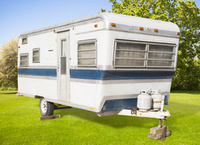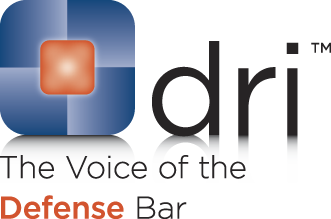 In Nevada Insurance Coverage lore, Victor Havas is legend.
In Nevada Insurance Coverage lore, Victor Havas is legend.
Cases involving Mr. Havas answer so many insurance coverage questions. What duty does an insurance agent owe to a customer? Havas v. Carter, 515 P.2d 397, 89 Nev. 497 (1973). For more information, see here. When is replacement value the appropriate measure of damages rather than actual case value? Havas v. Atlantic Ins. Co., 95 Nev. 415, 596 P.2d, 246 (1979). here. How can an insurance company avoid a waiver when it investigates a late filed claim? Havas v. Atlantic Ins. Co., 96 Nev. 586, 641 P.2d 1 (1980). and here.
One of Mr. Havas’ earliest forays into the world of insurance law involved his used car business. Mr. Havas operated a used car lot at the corner of Sahara and Fremont Street, outside the Las Vegas city limits. But he had other sales locations as well, one of which was within the Las Vegas city limits. Someone stole a travel trailer from Mr. Havas’ used car lot in Las Vegas. Mr. Havas made claim for the theft of the trailer. The insurance company denied the claim.
The Nevada Supreme Court decision in Nat’l Auto. & Cas. Ins. Co. v. Victor Havas, dba Vic Havas Motors, 75 Nev. 301, 339 P.2d 767 (1959) gives details regarding the Havas policy. The policy identified Havas’ business location on East Fremont Street. The policy was “to pay for loss of or damage to the automobile hereinafter called loss caused by theft * * *.” The policy covered only “automobiles consigned to or owned by the insured and held for sale or used in the insured’s business.” However, the policy excludes “automobiles sold by the insured under bailment, lease, conditional sale, mortgage or other type of encumbrance.”
At the trial level, the dispute focused on whether the coverage was limited to the Fremont Street business location or if the theft coverage extended to all of Mr. Havas’ used car lots. The insurance company argued that the policy only covered the vehicles kept on the Fremont Street lot since that was the only listed location.
However, Mr. Havas asked the trial court to examine the policy provision that says that “If the same theft and collision rates apply to all locations, no listing of locations is required.” 75 Nev. at 303. The trial court found in favor of Mr. Havas and the insurance company appealed. The court sustained the trial court decision explaining:
It is well established that when an insured has proved a loss apparently within the terms of the policy, the burden is on the insurer to show that such loss was produced by a cause which is excepted from the coverage. Zuckerman v. Underwriters at Lloyds, London, 42 Cal.2d 460, 267 P.2d 777; See also Anno. 48 A.L.R.2d 72, sec. 21.
Id.
The Supreme Court found nothing in the record evidenced a difference in premium rates between the two locations. Since Mr. Havas proved that the vehicle belonged to him and that it was stolen, the burden had shifted to the insurance company to prove that the exception applied. Since the insurance company failed to meet its burden of proof regarding this claimed exception, Havas won.
The U.S. Dist. Court, Dist. Of Nevada has cited Mr. Havas’ opinion favorably. In Great Am. Ins. Co. v. Vegas Constr. Co., No. 2:06-cv-00911-BES-PAL, 2008 U.S. Dist. LEXIS 81447 (D. Nev. Apr. 24, 2008) the court said:
In general, an insured has the burden to prove that the claim for which coverage is sought falls within the policy’s insuring agreement. See National Auto. & Cas. Ins. Co. v. Havas, 75 Nev. 301, 339 P.2d 767 (Nev. 1959). However, once the insured meets that initial burden, the insurer bears the burden of proving that an exclusion precludes coverage.
Id. at 20 (D. Nev. Apr. 24, 2008).
Related unanswered questions include which party has the duty to prove damages that are covered vs. uncovered and whether, if the insurance company can prove an exclusion, does the burden will shift back to the insured to prove exceptions to the exclusions. Great Am. Ins. Co. v. Vegas Constr. Co., No. 2:06-cv-00911-BES-PAL, 2008 U.S. Dist. LEXIS 81447 (D. Nev. Apr. 24, 2008) and Ace Prop. & Cas. Ins. Co. v. Vegas VP, LP, No. 2:07-CV-00421-BES-PAL, 2008 U.S. Dist. LEXIS 37495 (D. Nev. May 8, 2008).
If you require answers to coverage questions, please do not hesitate to contact Mike Mills at 702-240-6060 or send an email to mmills@blwmlawfirm.com. He will be glad to speak with you about your question.
 Follow
Follow Email
Email


